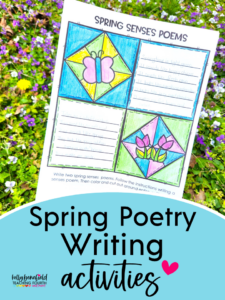
Do you use any strategies for writing summaries with your upper elementary reading students? Summarizing is a brief account of the main points of a story. On the surface this seems simple, but for many students, summarizing is a challenge. Explicitly teaching as well as modeling and practice is needed to help students understand how to determine which points are important and need to be included in a summary. Here are 3 strategies for writing summaries in your classroom.
Strategies for Writing Summaries
Understanding and determining the most important parts of a story is often difficult for our young readers. Using strategies can help. One way to help students learn to summarize is to give them opportunities to summarize in different ways. Some of my favorite strategies for summarizing fiction include:
- Somebody, Wanted, But, So, Then
- Beginning, Middle, End
- Summarizing Useing Story Elements
Somebody, Wanted, But, So Then
One of the hardest things for students to grasp is summarizing. Students tend to want to retell instead. A summary should be a brief overview of the story as a whole. To help students summarize instead of retell, the somebody, wanted, but, so then strategy a great way to help student focus on the important elements in a story while keeping the summary short.
- Somebody: who the story is about or the main characters. Students should explain the most important parts about the main character or characters in the story.
- Wanted: What does the character want? or What is the character’s goals?
- But: What is the problem that the character faces in the story?
- So: What is the solution to the problem? or How does the character reach her goals?
- Then: How does the story end?
Beginning, Middle, End
This summarizing strategy is a great way to introduce summarizing to students. This strategy narrows down the text and breaks it into three sections: the beginning, the middle, and the end. Students can focus on the important events and elements of each part of the story and write a sentence or two to explain the events of each section. The result is a concise summary.
Summarizing Using Story Elements
Using the story elements is another great way for students to summarize a story. While this type of summary may be a bit longer than the strategies above, it is a great way to begin or introduce students to the process of summarizing. Reminding students to keep the writing brief is an important part of helping students write this type of summary.
Another way to use this strategy is to let students write about each of the story elements. Students may write as much as they would like. Then they look closely at what they have written about each story element and decide what are the most important ideas that they have written. Students should then use only the most important information from their writing about the story to write a summary. The summary should be three or four sentences at the most.
- Character-who the story is about
- Setting-when and where the story takes place
- Problem or Conflict-the challenge or challenges the main character faces
- Solution or Resolution-how the problem is solved
- Theme-the message or lesson in the story
Heart Flipbooks: A Fun Way to Write Summaries









